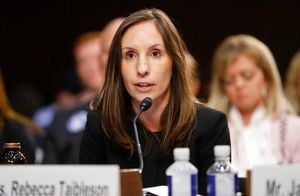On August 31, 2025, two major solar initiatives—one in Florida, the other in Pennsylvania—marked significant milestones in the nation’s ongoing transition toward renewable energy. From Duke Energy Florida’s Clean Energy Connection program offering immediate bill relief to income-qualified residents, to the Community College of Philadelphia (CCP) Northeast Regional Center celebrating a substantial Solar for Schools grant, these programs are reshaping how communities access and benefit from clean power. They’re also giving a glimpse into the future of energy equity and sustainability in America.
For many Floridians, the cost of electricity has long been a source of concern, especially for lower-income households. But as reported by Florida Politics, Duke Energy Florida’s newly expanded Clean Energy Connection program is aiming to change that narrative. The initiative, unveiled on August 31, 2025, specifically targets customers who are already receiving assistance through programs like Supplemental Security Income, Medicaid, Temporary Assistance for Needy Families, the Low Income Home Energy Assistance Program, or those enrolled in the Duke Energy Neighborhood Energy Saver program.
Here’s how it works: eligible customers sign up for a monthly subscription—no upfront costs, no new equipment, and no maintenance headaches. The subscription fee clocks in at $8.35 per kilowatt hour each month, but the real kicker is the energy credits: $9.03 per kilowatt hour. That means, right out of the gate, subscribers are saving money on their bills. There’s no catch—no time commitment, and customers can withdraw from the program whenever they choose. Even those who move to a new home within Duke Energy’s 13,000-square-mile service area can remain enrolled, making the benefit portable and flexible.
Duke Energy Florida State President Melissa Seixas summed up the program’s appeal, stating, “Through Duke Energy Florida’s Clean Energy Connection program, income-qualified customers can receive guaranteed savings, while also supporting solar energy – without any of the traditional equipment or costs. There’s no risk, and the reward is instant, which is why we encourage all eligible customers to consider enrolling today.”
Duke Energy’s commitment to clean energy is substantial. The company owns 12,300 megawatts of energy capacity across Florida, serving 2 million residential, commercial, and industrial customers. Its Clean Energy Connection solar sites alone generate a combined 749 megawatts of carbon-free electricity at peak, which is enough to power about 230,000 homes, according to company data cited by Florida Politics.
The impact of this program is twofold: it directly reduces monthly expenses for vulnerable households and contributes to Florida’s broader clean energy goals. And because there’s no requirement for new solar panels or other hardware at the customer’s home, barriers to participation are dramatically lowered. Renters, homeowners, and those on the move all stand to benefit—an important consideration in a state where housing stability can be unpredictable.
Meanwhile, hundreds of miles north in Philadelphia, the Community College of Philadelphia Northeast Regional Center was the site of another solar celebration on August 31, 2025. State and local officials gathered on the college’s third-floor outdoor patio to mark the awarding of a $176,695 Solar for Schools grant, a program designed to help educational institutions install rooftop solar arrays. The main CCP campus at 17th and Spring Garden streets also received a grant for $329,000, bringing the total windfall for the college to more than half a million dollars.
According to Northeast Times, the Solar for Schools program was enacted in 2024 and has already distributed nearly $22.5 million across 73 schools. The event drew a bipartisan crowd: State Sen. Joe Picozzi, state Reps. Martina White, Elizabeth Fiedler (who chairs the House Energy Committee and sponsored the original bill), and Morgan Cephas (chairwoman of the Philadelphia House delegation and a CCP board member) were all in attendance. Viktor Kagan, chief of staff for state Rep. Sean Dougherty, joined the celebration as well.
For CCP Northeast, which serves more than 1,700 students and is already a certified Leadership in Energy and Environmental Design (LEED) facility, the grant is more than just a financial boost. Jeanna Perlman, executive director of the CCP Northeast Regional Center, explained that the new rooftop solar arrays will offset 12 percent of the campus’s electricity usage. That’s a meaningful dent in the school’s energy costs, which can now be redirected to support students and educational programs.
CCP interim President Alycia Marshall highlighted the program’s forward-thinking approach, saying the Solar for Schools grant would “reduce CCP’s energy costs and allow the college to reinvest the savings in other areas.” The program isn’t just about saving money; it’s about investing in the future of the community and the environment.
State Rep. Elizabeth Fiedler, who championed the Solar for Schools bill, expressed her satisfaction at seeing the idea come to fruition. “It’s a great idea that is now making a meaningful difference,” she remarked, adding that she hopes the initiative will inspire more people to pursue careers in solar installation—a sector that’s expected to see rapid growth as the nation pivots away from fossil fuels.
On the other side of the aisle, state Rep. Martina White, who supported the bipartisan bill, called it a “smart step forward.” She emphasized the importance of collaboration, stating, “When we work together, Pennsylvania wins.” State Sen. Joe Picozzi echoed this sentiment, describing the measure as “future-oriented” and noting the broad support it received in both the Senate and House.
These two stories—one from the Sunshine State, the other from the Keystone State—underscore the growing momentum behind solar energy in the United States. Both programs are designed to lower energy costs for those who need it most, while also accelerating the shift to renewable power sources. And both are the result of collaboration between government, industry, and community stakeholders, demonstrating that bipartisan cooperation can yield tangible benefits.
While the challenges of transitioning to clean energy are real—ranging from upfront infrastructure costs to the need for workforce training—these initiatives show that practical solutions are not only possible but already underway. Whether it’s a utility company making solar savings accessible to low-income Floridians, or a state legislature investing in the next generation of solar-ready schools, the message is clear: the future of energy is here, and it’s a little brighter for everyone.




